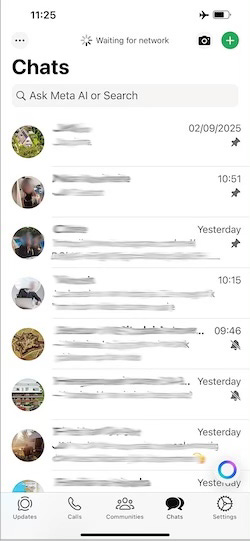Modern Web Weekly #62
The modern web, tested and explained in plain English

What We Need To Make Web Apps A Success
We don’t need to wait for Apple to jump on board
Here’s a fun experiment: put your phone in flight mode so there’s no internet connection, and make sure it’s not connected to wifi either.
Now open your favorite web browser and open a random website, just any website you use regularly.
Chances are, you’re greeted with this:
You’re probably not even surprised, because this is what you’re used to: when there’s no internet, websites don’t work.
Now, do the same with the WhatsApp native app; keep your phone offline and open the app. You’ll be greeted by this:
This time, there’s no dinosaur telling me there’s no internet. I just see my existing chats, and I can even compose a message and hit the Send button. Of course, it won’t be sent while I’m offline, but it’s scheduled to be sent when I’m back online.
What if I told you your web app can do this as well?
In fact, this problem was already solved almost a decade ago, yet most websites still shove a dinosaur in your face when there’s no network.
The unused potential of web apps
This is just an example of web apps not using their full potential by not implementing features that have been available to them for years. This has resulted in users being accustomed to web apps that don’t work when there’s no network, but there’s no reason for this. Web apps are perfectly capable of working offline, just like native apps.
But there are many more features that are underused in web apps. I’m still amazed that I have to manually enter my location in certain web apps while they could have used the Geolocation API to get my GPS coordinates.
Web apps can also save data for offline use, let users log in with their face or fingerprint, receive push notifications, connect to other devices through Bluetooth and NFC, and download files in the background.
You can now even run Photoshop and Figma on the web, yet most web apps are still stuck in the last century and are merely documents with some interactivity sprinkled on top.
Even worse, companies actively sabotage their own web apps.
The dumbing-down of web apps
Many web apps today only serve to promote their native counterparts. Go to the website of any social media platform, and you’ll be greeted with “Install our app for the best experience” banners and popups.
The “best experience” here means that the website has been deliberately dumbed down to get you to install the native app. For example, if you want to view the full activity feed of one of your connections on LinkedIn, you’ll need to download their 414MB app.
Other companies like Spotify, X, and Instagram do offer PWAs, but these are not nearly as good as the native versions or are simply unusable.
Spotify’s PWA won’t even play on iOS, and while the native app of X and Instagram work offline, their PWAs don’t, while there’s no technical reason for them not to:
The message that this gives is that native apps are superior and that web apps are just not good enough.
After all, if X and Instagram “can’t” do it, web apps must be bad, right?
You could argue they don’t want to invest in web apps because of the lack of support for PWAs on iOS, and quite frankly, I can’t blame them. But as crucial as iOS support is to the success of PWAs, it’s only half the story.
The chicken and egg problem of PWAs
Users have been conditioned to think that native apps are superior to web apps and that the only way to install an app is through an app store. It’s our job as developers to prove them wrong.
While we can’t force Apple to allow alternative browser engines on iOS that do provide proper support for PWAs, we can show users what web apps are capable of and that they can be installed from the web.
Some argue that users prefer native apps over web apps, but that’s like saying to Henry Ford that users prefer horses over cars. Users don’t prefer native apps; they’re just not familiar with (progressive) web apps.
So while it’s understandable that companies are reluctant to invest in web apps because of the lack of support on iOS, it doesn’t mean that they should be treated as incapable, second-class citizens.
Even if you don’t intend your web app to be installed like a native app, it can probably be much better than it is right now. There’s no reason why it shouldn’t work offline or why it should be worse than a native app. We do need better iOS support, but we don’t need to wait for that to make our web apps better. We can make them better today.
If we show users what web apps can do, they will start using them and get more familiar with installable web apps.
The path to success for web apps
If companies ever want to escape the walled gardens of app stores that hold a tight grip on the app market, then building better web apps is the way to go.
Stop treating web apps like mere promotional vehicles for their native counterparts and use their full potential.
The legal battle for better PWA support on iOS is being fought, and in the meantime, we need to educate web developers on what web apps can do, and familiarise users with installable web apps that can be just as good as native apps.
It’s the only way to go.


